

Linking Research to Action: A Simple Guide to Writing an Action Research Report
What Is Action Research, and Why Do We Do It?
Action research is any research into practice undertaken by those involved in that practice, with the primary goal of encouraging continued reflection and making improvement. It can be done in any professional field, including medicine, nursing, social work, psychology, and education. Action research is particularly popular in the field of education. When it comes to teaching, practitioners may be interested in trying out different teaching methods in the classroom, but are unsure of their effectiveness. Action research provides an opportunity to explore the effectiveness of a particular teaching practice, the development of a curriculum, or your students’ learning, hence making continual improvement possible. In other words, the use of an interactive action-and-research process enables practitioners to get an idea of what they and their learners really do inside of the classroom, not merely what they think they can do. By doing this, it is hoped that both the teaching and the learning occurring in the classroom can be better tailored to fit the learners’ needs.
You may be wondering how action research differs from traditional research. The term itself already suggests that it is concerned with both “action” and “research,” as well as the association between the two. Kurt Lewin (1890-1947), a famous psychologist who coined this term, believed that there was “no action without research; no research without action” (Marrow, 1969, p.163). It is certainly possible, and perhaps commonplace, for people to try to have one without the other, but the unique combination of the two is what distinguishes action research from most other forms of enquiry. Traditional research emphasizes the review of prior research, rigorous control of the research design, and generalizable and preferably statistically significant results, all of which help examine the theoretical significance of the issue. Action research, with its emphasis on the insider’s perspective and the practical significance of a current issue, may instead allow less representative sampling, looser procedures, and the presentation of raw data and statistically insignificant results.
What Should We Include in an Action Research Report?
The components put into an action research report largely coincide with the steps used in the action research process. This process usually starts with a question or an observation about a current problem. After identifying the problem area and narrowing it down to make it more manageable for research, the development process continues as you devise an action plan to investigate your question. This will involve gathering data and evidence to support your solution. Common data collection methods include observation of individual or group behavior, taking audio or video recordings, distributing questionnaires or surveys, conducting interviews, asking for peer observations and comments, taking field notes, writing journals, and studying the work samples of your own and your target participants. You may choose to use more than one of these data collection methods. After you have selected your method and are analyzing the data you have collected, you will also reflect upon your entire process of action research. You may have a better solution to your question now, due to the increase of your available evidence. You may also think about the steps you will try next, or decide that the practice needs to be observed again with modifications. If so, the whole action research process starts all over again.
In brief, action research is more like a cyclical process, with the reflection upon your action and research findings affecting changes in your practice, which may lead to extended questions and further action. This brings us back to the essential steps of action research: identifying the problem, devising an action plan, implementing the plan, and finally, observing and reflecting upon the process. Your action research report should comprise all of these essential steps. Feldman and Weiss (n.d.) summarized them as five structural elements, which do not have to be written in a particular order. Your report should:
- Describe the context where the action research takes place. This could be, for example, the school in which you teach. Both features of the school and the population associated with it (e.g., students and parents) would be illustrated as well.
- Contain a statement of your research focus. This would explain where your research questions come from, the problem you intend to investigate, and the goals you want to achieve. You may also mention prior research studies you have read that are related to your action research study.
- Detail the method(s) used. This part includes the procedures you used to collect data, types of data in your report, and justification of your used strategies.
- Highlight the research findings. This is the part in which you observe and reflect upon your practice. By analyzing the evidence you have gathered, you will come to understand whether the initial problem has been solved or not, and what research you have yet to accomplish.
- Suggest implications. You may discuss how the findings of your research will affect your future practice, or explain any new research plans you have that have been inspired by this report’s action research.
The overall structure of your paper will actually look more or less the same as what we commonly see in traditional research papers.
What Else Do We Need to Pay Attention to?
We discussed the major differences between action research and traditional research in the beginning of this article. Due to the difference in the focus of an action research report, the language style used may not be the same as what we normally see or use in a standard research report. Although both kinds of research, both action and traditional, can be published in academic journals, action research may also be published and delivered in brief reports or on websites for a broader, non-academic audience. Instead of using the formal style of scientific research, you may find it more suitable to write in the first person and use a narrative style while documenting your details of the research process.
However, this does not forbid using an academic writing style, which undeniably enhances the credibility of a report. According to Johnson (2002), even though personal thoughts and observations are valued and recorded along the way, an action research report should not be written in a highly subjective manner. A personal, reflective writing style does not necessarily mean that descriptions are unfair or dishonest, but statements with value judgments, highly charged language, and emotional buzzwords are best avoided.
Furthermore, documenting every detail used in the process of research does not necessitate writing a lengthy report. The purpose of giving sufficient details is to let other practitioners trace your train of thought, learn from your examples, and possibly be able to duplicate your steps of research. This is why writing a clear report that does not bore or confuse your readers is essential.
Lastly, You May Ask, Why Do We Bother to Even Write an Action Research Report?
It sounds paradoxical that while practitioners tend to have a great deal of knowledge at their disposal, often they do not communicate their insights to others. Take education as an example: It is both regrettable and regressive if every teacher, no matter how professional he or she might be, only teaches in the way they were taught and fails to understand what their peer teachers know about their practice. Writing an action research report provides you with the chance to reflect upon your own practice, make substantiated claims linking research to action, and document action and ideas as they take place. The results can then be kept, both for the sake of your own future reference, and to also make the most of your insights through the act of sharing with your professional peers.
Feldman, A., & Weiss, T. (n.d.). Suggestions for writing the action research report . Retrieved from http://people.umass.edu/~afeldman/ARreadingmaterials/WritingARReport.html
Johnson, A. P. (2002). A short guide to action research . Boston, MA: Allyn & Bacon.
Marrow, A. J. (1969). The practical theorist: The life and work of Kurt Lewin . New York, NY: Basic Books.
Tiffany Ip is a lecturer at Hong Kong Baptist University. She gained a PhD in neurolinguistics after completing her Bachelor’s degree in psychology and linguistics. She strives to utilize her knowledge to translate brain research findings into practical classroom instruction.

Research Methods and Design
- Action Research
- Case Study Design
- Literature Review
- Quantitative Research Methods
- Qualitative Research Methods
- Mixed Methods Study
- Indigenous Research and Ethics This link opens in a new window
- Identifying Empirical Research Articles This link opens in a new window
- Research Ethics and Quality
- Data Literacy
- Get Help with Writing Assignments
Action research
A type of applied research designed to find the most effective way to bring about a desired social change or to solve a practical problem, usually in collaboration with those being researched.
SAGE Research Methods Videos
How do you define action research.
Professor David Coghlan explains action research as an approach that crosses many academic disciplines yet has a shared focus on taking action to address a problem. He describes the difference between this approach and empirical scientific approaches, particularly highlighting the challenge of getting action research to be taken seriously by academic journals
Dr. Nataliya Ivankova defines action research as using systematic research principles to address an issue in everyday life. She delineates the six steps of action research, and illustrates the concept using an anti-diabetes project in an urban area.
This is just one segment in a whole series about action research. You can find the rest of the series in our SAGE database, Research Methods:
Videos covering research methods and statistics
Further Reading
- << Previous: Home
- Next: Case Study Design >>
- Last Updated: May 7, 2024 9:51 AM
CityU Home - CityU Catalog

Suggestions for Writing the Action Research Report *
Allan Feldman and Tarin Weiss
University of Massachusetts Amherst
There are five structural elements for an action research report. Although these elements will be described in a particular order, they need not be that way in your report. In fact, they do not even need to be separated from one another.
The context
The first element of the action research report is a description of the context within which the action research took place. Depending on the project that you do, the locus of the context can be your classroom, your school, or your school district. It is possible that the context of the project includes aspects of more than one of these. It is important to remember that the physical description of the setting is important, but that there are other aspects that are important depending on the project. For example, if your project focuses on working with parents or students, a description of these populations should be included. If the project relates to an entire district, salient features of the geographical and political area, as well as important features of the schools are part of the relevant context.
Statement and Origin of your Research Focus
The statement of your research focus should answer one or more of the following questions:
Ä What did you investigate?
Ä What have you accomplished or attempted to accomplish in this study?
Ä What have been your goals?
This element of the report should also address the way in which your starting point developed. That is
How did the idea originate?
How and why did it change through the year?
What impact did your research notebook group have on the development of your starting point?
In addition, this section should include what you learned from reading the research literature that informed your study.
Methods This element of the report focuses on the way in which you investigated your practice situation.
Ä Describe what you did and why.
Ä What sort of data did you collect?
Ä How did you collect the data?
Ä What successes or difficulties did you have in carrying out this action research?
The Findings The fourth element of the report states what it was that you accomplished and/or found out. Remember that all action research projects involve actions so therefore there are effects of those actions. And, every action research project results in the teacher coming to a new understanding of his or her own educational situation. Therefore each report should contain some description of what it was that you learned. Make sure to include any events, circumstances or data that contradict what you had hoped to do or find out.
Implications Although this element is labeled implications , it is not necessary that each project have far reaching effects. These implications could be a statement of how participation in this research has affected the ways in which you look at your teaching, your students, or your school. In other words, do you see the educational world differently now, and how will that affect what it is that you will do next?
Finally, include a paragraph describing the next step of this research. Is it complete? Is there another scenario you wish to research? Explain how you would continue action research following up on this study or developing a new idea. Consider possible supports (without an action research course) and impediments to your efforts.
Overall, this structure is not dissimilar to what you may be familiar with -- the standard research report. There is a general introduction that places the research within the field, a statement of the problem or hypothesis, the method used, findings of the research, and finally, implications. But it can be significantly different because you may feel free to write in the first person and to use a narrative style -- to tell a validated story. You may also feel free to write in the formal style of scientific research. The choice is yours.
* Based on suggestions made by Peter Posch.
Have a language expert improve your writing
Run a free plagiarism check in 10 minutes, generate accurate citations for free.
- Knowledge Base
Methodology
- What Is Action Research? | Definition & Examples
What Is Action Research? | Definition & Examples
Published on January 27, 2023 by Tegan George . Revised on January 12, 2024.

Table of contents
Types of action research, action research models, examples of action research, action research vs. traditional research, advantages and disadvantages of action research, other interesting articles, frequently asked questions about action research.
There are 2 common types of action research: participatory action research and practical action research.
- Participatory action research emphasizes that participants should be members of the community being studied, empowering those directly affected by outcomes of said research. In this method, participants are effectively co-researchers, with their lived experiences considered formative to the research process.
- Practical action research focuses more on how research is conducted and is designed to address and solve specific issues.
Both types of action research are more focused on increasing the capacity and ability of future practitioners than contributing to a theoretical body of knowledge.
Here's why students love Scribbr's proofreading services
Discover proofreading & editing
Action research is often reflected in 3 action research models: operational (sometimes called technical), collaboration, and critical reflection.
- Operational (or technical) action research is usually visualized like a spiral following a series of steps, such as “planning → acting → observing → reflecting.”
- Collaboration action research is more community-based, focused on building a network of similar individuals (e.g., college professors in a given geographic area) and compiling learnings from iterated feedback cycles.
- Critical reflection action research serves to contextualize systemic processes that are already ongoing (e.g., working retroactively to analyze existing school systems by questioning why certain practices were put into place and developed the way they did).
Action research is often used in fields like education because of its iterative and flexible style.
After the information was collected, the students were asked where they thought ramps or other accessibility measures would be best utilized, and the suggestions were sent to school administrators. Example: Practical action research Science teachers at your city’s high school have been witnessing a year-over-year decline in standardized test scores in chemistry. In seeking the source of this issue, they studied how concepts are taught in depth, focusing on the methods, tools, and approaches used by each teacher.
Action research differs sharply from other types of research in that it seeks to produce actionable processes over the course of the research rather than contributing to existing knowledge or drawing conclusions from datasets. In this way, action research is formative , not summative , and is conducted in an ongoing, iterative way.
| Action research | Traditional research | |
|---|---|---|
| and findings | ||
| and seeking between variables | ||
As such, action research is different in purpose, context, and significance and is a good fit for those seeking to implement systemic change.
Prevent plagiarism. Run a free check.
Action research comes with advantages and disadvantages.
- Action research is highly adaptable , allowing researchers to mold their analysis to their individual needs and implement practical individual-level changes.
- Action research provides an immediate and actionable path forward for solving entrenched issues, rather than suggesting complicated, longer-term solutions rooted in complex data.
- Done correctly, action research can be very empowering , informing social change and allowing participants to effect that change in ways meaningful to their communities.
Disadvantages
- Due to their flexibility, action research studies are plagued by very limited generalizability and are very difficult to replicate . They are often not considered theoretically rigorous due to the power the researcher holds in drawing conclusions.
- Action research can be complicated to structure in an ethical manner . Participants may feel pressured to participate or to participate in a certain way.
- Action research is at high risk for research biases such as selection bias , social desirability bias , or other types of cognitive biases .
If you want to know more about statistics , methodology , or research bias , make sure to check out some of our other articles with explanations and examples.
- Normal distribution
- Degrees of freedom
- Null hypothesis
- Discourse analysis
- Control groups
- Mixed methods research
- Non-probability sampling
- Quantitative research
- Inclusion and exclusion criteria
Research bias
- Rosenthal effect
- Implicit bias
- Cognitive bias
- Selection bias
- Negativity bias
- Status quo bias
Action research is conducted in order to solve a particular issue immediately, while case studies are often conducted over a longer period of time and focus more on observing and analyzing a particular ongoing phenomenon.
Action research is focused on solving a problem or informing individual and community-based knowledge in a way that impacts teaching, learning, and other related processes. It is less focused on contributing theoretical input, instead producing actionable input.
Action research is particularly popular with educators as a form of systematic inquiry because it prioritizes reflection and bridges the gap between theory and practice. Educators are able to simultaneously investigate an issue as they solve it, and the method is very iterative and flexible.
A cycle of inquiry is another name for action research . It is usually visualized in a spiral shape following a series of steps, such as “planning → acting → observing → reflecting.”
Sources in this article
We strongly encourage students to use sources in their work. You can cite our article (APA Style) or take a deep dive into the articles below.
George, T. (2024, January 12). What Is Action Research? | Definition & Examples. Scribbr. Retrieved August 21, 2024, from https://www.scribbr.com/methodology/action-research/
Cohen, L., Manion, L., & Morrison, K. (2017). Research methods in education (8th edition). Routledge.
Naughton, G. M. (2001). Action research (1st edition). Routledge.
Is this article helpful?
Tegan George
Other students also liked, what is an observational study | guide & examples, primary research | definition, types, & examples, guide to experimental design | overview, steps, & examples, get unlimited documents corrected.
✔ Free APA citation check included ✔ Unlimited document corrections ✔ Specialized in correcting academic texts
14+ SAMPLE Action Research Report in PDF | MS Word
Action research report | ms word, 14+ sample action research report, what is an action research report, different types of action research report, basic elements of an action research report, how to write an action research report, what are some examples of action research reports, what is the purpose of an action research report, what are the significant steps in writing an action research report, what is the difference between an action research report and a research progress report.
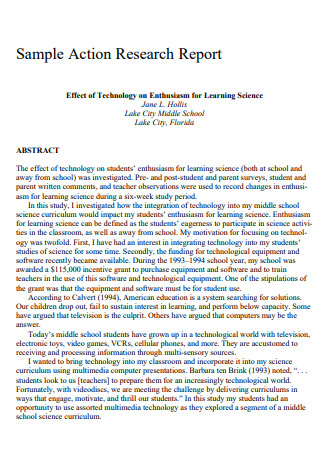
Action Research Report
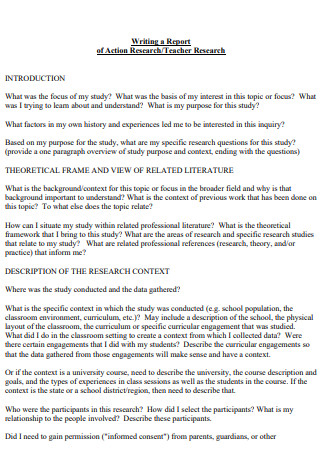
Teacher Action Research Report
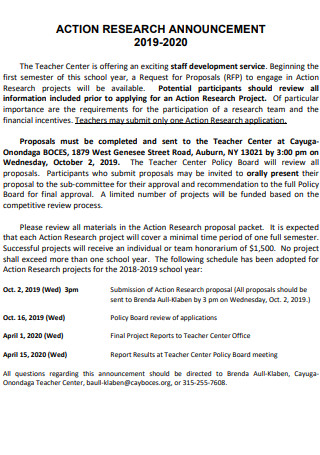
Action Research Announcement Report
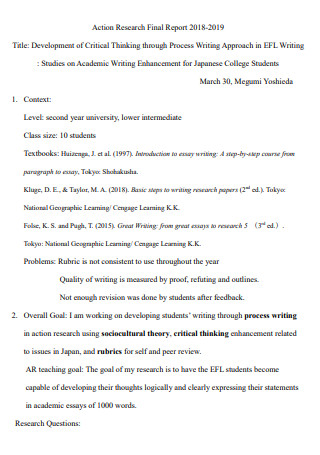
Action Research Final Report
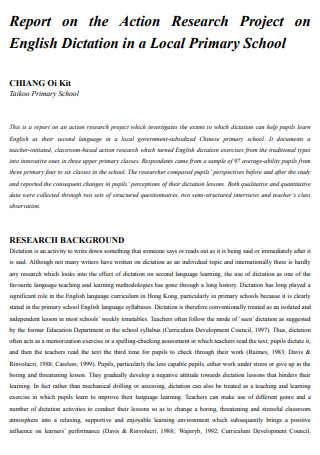
School Action Research Report
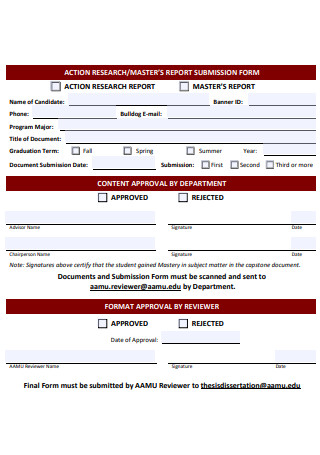
Action Research Master Report
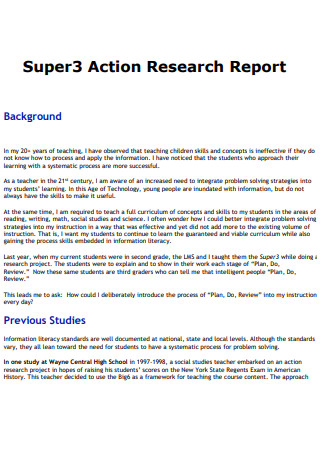
Action Research Study Report
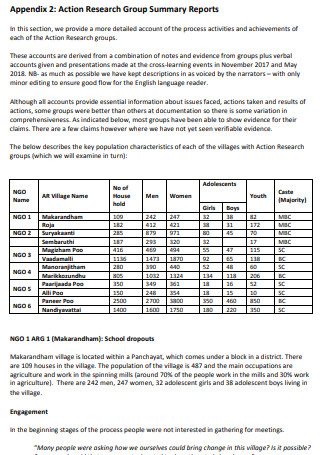
Action Research Summary Report
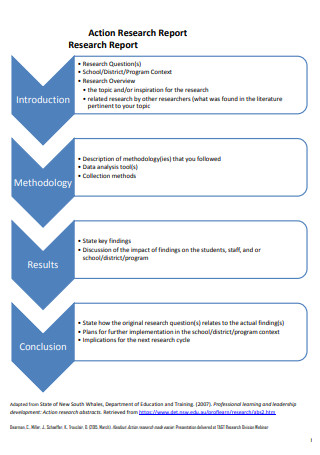

Sample Action Research Report
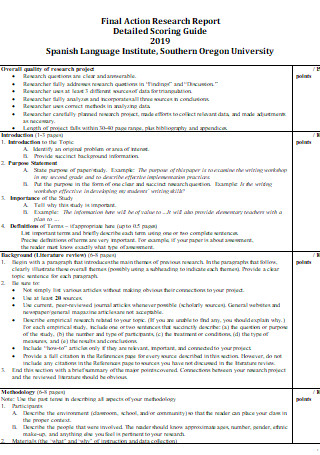
Final Action Research Report

Action Research in English Report Writing
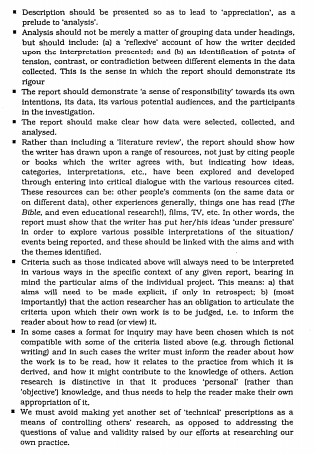
Formal Action Research Report
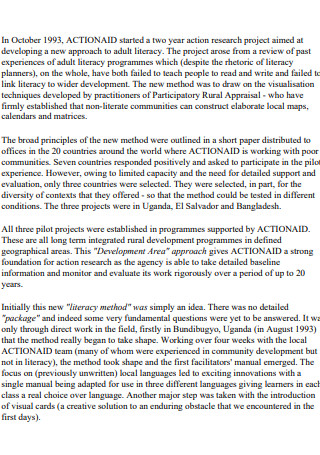
Action research report on Education Paper
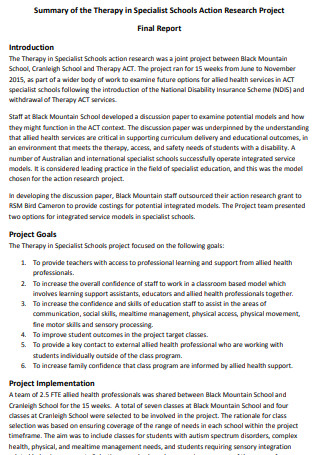
Summary of Therapy Action Research Project Final Report
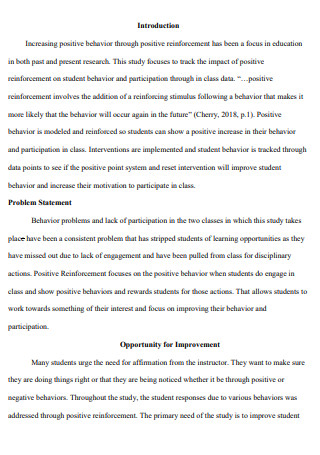
Action Research Proposal Report
1. action research report in education, 2. action research report on classroom problems, 3. action research summary report, 4. action research report in english report writing, step 1: define the major goals in the action research , step 2: describe the action research process in detail, step 3: present the statistical and practical significance of the action research, step 4: proofread and revise the report, step 5: prepare the final action research report, what is the difference between an action research report and a research progress report , share this post on your network, you may also like these articles, medical report.
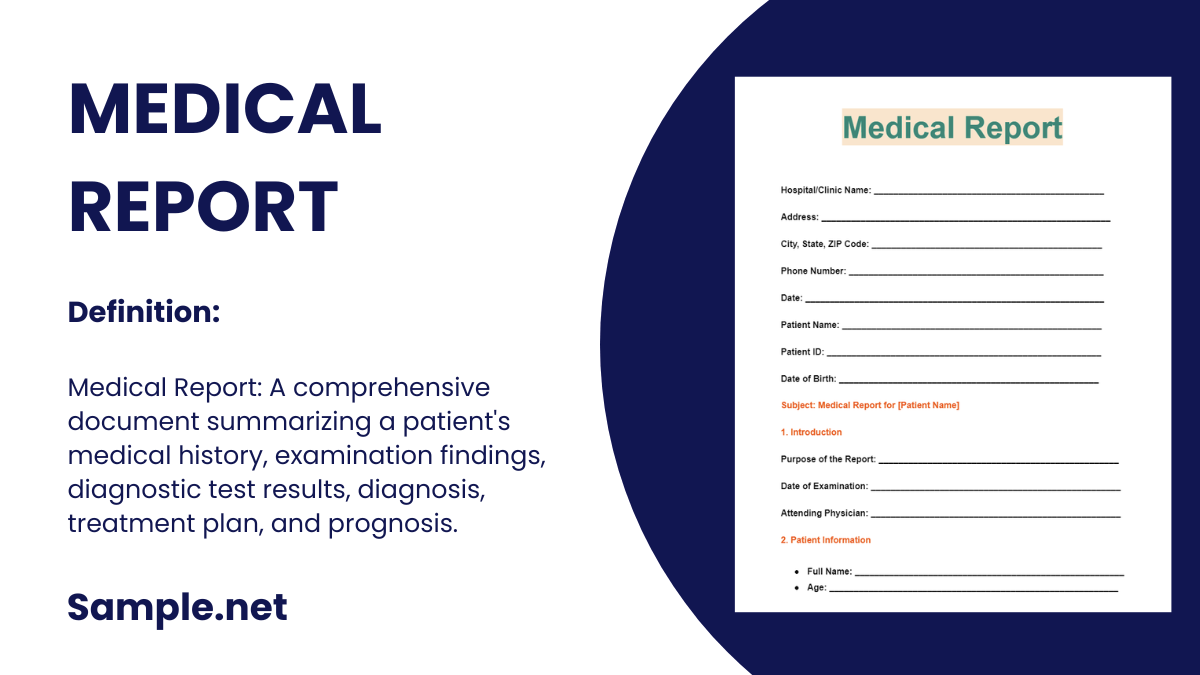
In this comprehensive guide, we will explore the essentials of creating an effective Medical Report. Whether you are a healthcare professional or need to understand how to document medical…
Training Report
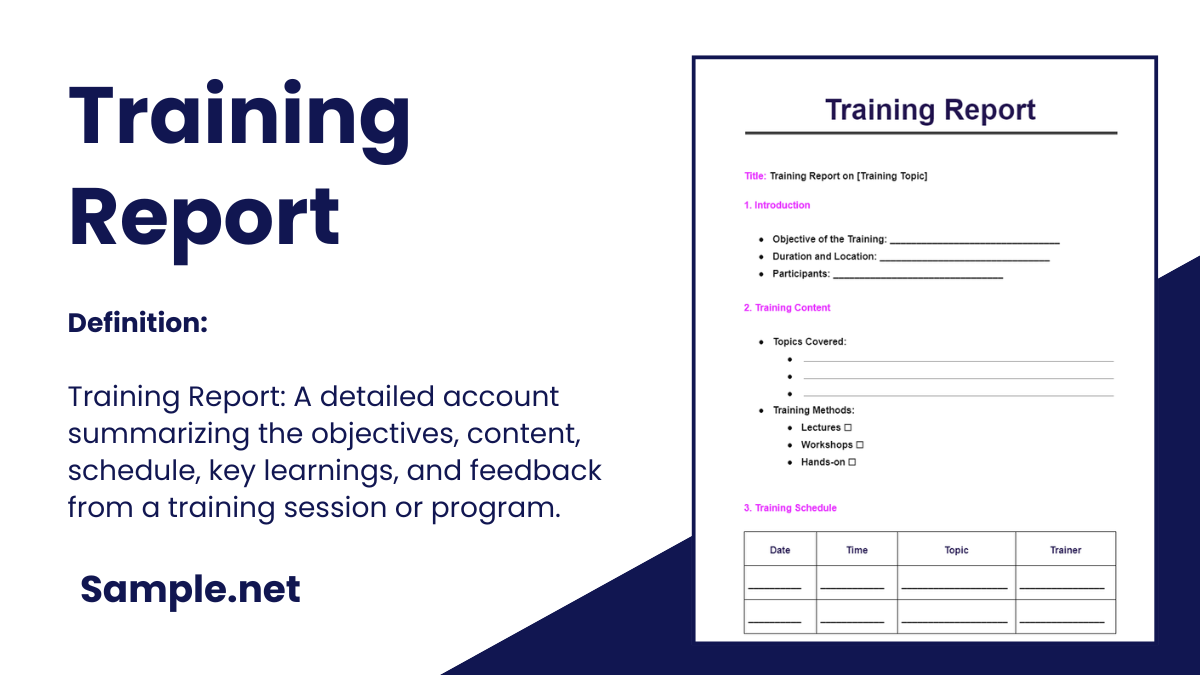
In this comprehensive guide, we will delve into the intricacies of creating an effective Training Report. Whether you are new to this process or looking to enhance your existing…
browse by categories
- Questionnaire
- Description
- Reconciliation
- Certificate
- Spreadsheet
Information
- privacy policy
- Terms & Conditions
- Business Templates
- Sample Reports
FREE 10+ Action Research Report Samples [ Project, Terminal, Classroom ]

Every professional field of study, such as medicine, nursing, psychology, sociology, biology, and education, will conduct an action research study t address some areas of the field that needs some attention or improvement. This is one way to help evolve the field to do better and benefit not only the people dedicated to these fields but also the general public. The process of evolving and developing for these certain fields will never disappear as new studies and modifications will always be discovered. If you’re assigned to make action research and write a report about it, no need to worry about how to write one. Read the article to find out how to make an action research report.
Action Research Report
10+ action research report samples, 1. action research report, 2. teacher action research report, 3. action research announcement report, 4. action research final report, 5. action research project report, 6. school action research report, 7. action research master report, 8. action research study report, 9. action research summary report, 10. sample action research report, 11. final action research report, what is action research, how to write an action research report, 2. statement of research focus, 3. data collection method, 4. research findings, 5. implications and plan for further actions, what are the types of action research, what is an action research example, what are the advantages of action research.

Size: 52 KB

Size: 89 KB

Size: 185 KB

Size: 554 KB
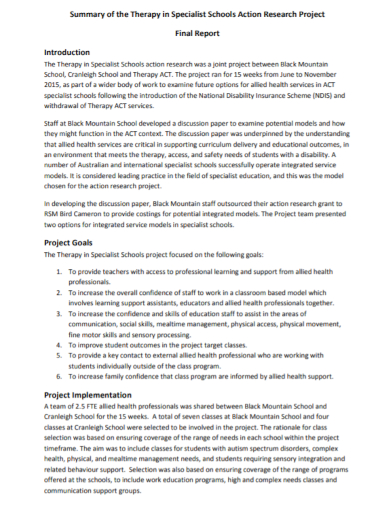
Size: 94 KB

Size: 215 KB

Size: 925 KB

Size: 228 KB

Size: 14 KB
Action research is a type of research done by any professional field such as education, social work, medicine, business, psychology, engineering, etc. to investigate the current practices or areas in the field and suggest to make improvements on it.
The action research report must have the following components:
The first part of the action research report is a comprehensive description of the context within which the action research took place, the people involved in the study, and the area of the field you are investigating. it is important to include an accurate description of these aspects. Also, include in this part the literature review that will support your action research. Make sure the sources for your literature review are reliable. I
The statement of research focus must describe the following points in great detail: The area you are investigating and the goals you want to accomplish in your research, and the actual accomplishments you achieved. You should also give an explanation on why you choose the topic area, how your research changed throughout the course of the research period, and the factors that help develop it to its final outcome.
The methodology part must focus on the techniques and steps in which you investigated your topic. For example, you can describe what type of data you collected and how you collected them, and the success and challenges you have in doing your action research. Describe also how you interpreted, analyze, and assessed your data and how those methods helped you achieved your findings.
The next part of your report states your findings in your research. Describe the findings in great detail. Make sure your findings also report the learnings you acquired from your entire research. Include also any events or data that contradict your initial hypothesis or goals on what you hoped to find out. Explain how this instance affects your action research.
The last part of your report is explaining the implications or conclusions you drew from your action research. Explain how it has affected the ways on how you view your current field. Do you view the field you’re working for differently now? And how will it affect your work in the future?
Of course, action research must involve a plan to improve the areas you research for to be done, and so include a paragraph explaining your recommendations for the areas. Also, include your next step for the research; explain if you will continue your action research to follow up on an area you failed to delve into in your research or develop a new idea.
The types of action research design are individual research, collaborative research, school-wide research, and district-wide research.
An example of action research is when a school conducts research to investigate the issues or concerns present in their school for a certain school period.
There are a lot of advantages to action research. The main advantages of action research are that it can be used as data for other types of research, and gain in-depth knowledge about the problem.
As you might have noticed, the overall structure of an action research report is not as different from a standard research report. It has the same components as your typical research report, so writing one is not as complicated as you expect it to be. However, action research is more lenient on the writing style. You are free to write in the first-person point of view and use a narrative style or you can follow the good old formal style of scientific research. If you are ready to get started on writing an action research report, you can use our sample templates provided above to help you get started. They are free and easy to download so you can download as many templates as you like!
Related Posts
Free 11+ sample research plan, free 10+ committee report templates, free 10+ research action plan samples, free 10+ business research report samples, free 10+ school research proposal samples, free 10+ marketing research report samples, free 9+ market research report samples, free 9+ investment research report samples, free 8+ sample technical analysis, free 7+ sample after action review, free 15+ sample evaluation reports, free 11+ research plan samples, free 11+ consultant status report samples, free 10+ research and development report samples, free 10+ stock research report samples, free 8+ sample after action reports, free 5+ qualitative research plan samples, free 43+ report examples, free 14+ sample research proposals.
Academia.edu no longer supports Internet Explorer.
To browse Academia.edu and the wider internet faster and more securely, please take a few seconds to upgrade your browser .
Enter the email address you signed up with and we'll email you a reset link.
- We're Hiring!
- Help Center

TERMINAL REPORT

Seminar -Workshop on interactive Task-Based Teaching Strategies across Disciplines
Related Papers
Jhaynee Lou Tudayan
The descriptive–comparative study assessed the proficiency of Mathematics teachers in Elementary Statistics and Probability in the Teacher Education Institutions (TEIs) of La Union as a basis for formulating a validated five-day training program. Specifically, it determined the level of proficiency of Mathematics teachers along Content, such as: Descriptive Statistics, Inferential Statistics and Probability; and along Pedagogy, namely: Instructional Strategies, Assessment Strategies and Management Strategies; the strengths and weaknesses of the teachers along Content and Pedagogy; and the significant difference on the level of proficiency of the respondents. Data were collected using two sets of researcher-made proficiency tests. The participants were 25 Mathematics teachers under the Teacher Education Program in La Union during the Academic Year 2017-2018. The data gathered were treated statistically using frequency, weighted mean, percentage and ranking, and t-test for two independent samples. It was found that the Mathematics teachers had good level of proficiency along Content and Pedagogy but they were all found to be weak in these areas. It is recommended that the TEIs should consider the validated five-day training program for adoption and implementation to improve the teachers’ proficiency and enhance their identified weaknesses.
Russell, S., Ong, L., & Rey Ty. (Eds.). (2011). Philippine Youth Leadership Program. DeKalb: Northern Illiniois University International Training Office.
Historically Digitized
Qais Alsafasfeh
Noel Alegre
April Joyce
Kimberly Wrightson , Ardith Peters
IOER International Multidisciplinary Research Journal ( IIMRJ) , Mark Gil Vega
The Department of Education (DepEd) has implemented a policy on the Learning Action Cell (LAC) as a Professional Development Strategy for teachers. This policy helps the teacher to collaborate and solve shared challenges in the school. The principal objectives of this study were to investigate the benefits, challenges, and means of implementation of Learning Action Cell of Science teachers in Secondary Schools of DepEd in the National Capital Region. The study used qualitative, multiple case study design employing survey questionnaires, individual interviews, focus group discussions and LAC observations There were five individual interviews, six focus groups, four actual LAC observations, with approximately 59 participants conducted in this case study. The findings revealed that the implementation of LAC concerning the scheduling of sessions is different and inconsistent with other schools. In addition, there is no tool for evaluating the LAC session, no success indicator applied in the school and no LAC model to follow in implementing LAC. There are four themes that emerged in the benefits experienced by science teachers, which include: Better Working Environment, Develop Good Relationship, Professional Growth, Content and Pedagogical Knowledge. The participants in this study identified a number of challenges. They were divided into six themes: Scheduling, Disruption of Classes, Teachers' Availability, LAC Activities, LAC Framework, and Funding. Furthermore, the principal results of the study showed that the implementation of LAC has an impact on teaching science but still, the participants recommended strengthening the LAC through creating a LAC model and development of LAC evaluation to monitor the status of LAC in each school properly.
Russel Aporbo
Loading Preview
Sorry, preview is currently unavailable. You can download the paper by clicking the button above.
RELATED PAPERS
Marilyn Harran
alexa villegas
Amber Stuver
Juniel Lucidos
Natasha Pourdana, Ph.D.
Suzanne M Johnson
Steve Graham
… Conference on English Language Teaching: Selected …
Chan Narith Keuk
MAA Focus, Vol. 28, No. 9, pp. 10-11.
ANNIE SELDEN
Prof. Angelica M Baylon
PAEPI Biennial Publication c/o MAAP (DRES/ERO)
The Language Teacher
Eoin Jordan
Masako Mouri
Morten Hunke
Benjamin Halligan
Orlando Balderama
The Asian EFL Journal Quarterly
Satoko Watkins
Armando Guidote , Denise Galiza , Rhoda Nicdao
Ruda Caren Balabad
John A McArthur
Vincent Gaffney
Prof. Negar Elhamian , Helen Bihag , Dondon Salingay
Nagalakshmi Chelluri
Asia Pacific Journal of Multidisciplinary Research
Research and Statistics Center
Jose R Fermin
Bea Patrizia Santos
The 2012 Pan-SIG Proceedings Literacy - Signals of Emergence
Bill Mboutsiadis
Letty Afuang
Jerry Gebhard
22. Kapelari, S., Alexopoulos, G. & Sagmeister, K., 2019. Partner evaluation reports on science café implementation. BigPicnic Deliverable D.4.1. London: BGCI. Available on: https://www.bigpicnic.net/resources/public-views-and-recommendations-rri-food-security/
Georgios Alexopoulos
Ryan N . Ludovice EdD
Asian EFL Journal
Neil Johnson
RELATED TOPICS
- We're Hiring!
- Help Center
- Find new research papers in:
- Health Sciences
- Earth Sciences
- Cognitive Science
- Mathematics
- Computer Science
- Academia ©2024

Racial Equity Action Plan Progress and Impact Report

Since issuing a formal apology in October 2021 for our historical role in promoting, perpetuating, and failing to challenge racism and human hierarchy, APA has been steadfast in its mission to rectify systemic inequities and foster an inclusive and equitable future. The apology marked the beginning of a profound transformation within our organization—one that acknowledges the previous actions and inactions of APA and psychology, improves coordination across the association and field, and commits to substantial, lasting change.
This Racial Equity Action Plan Progress and Impact Report describes the collaborative efforts undertaken to date and the tangible progress made toward dismantling systemic racism in psychology and society at large, as well as the strategic principles guiding this work. This report does more than highlight APA’s progress on this complex issue. It reaffirms our dedication to building a more equitable future for all.
As outlined in this report, APA’s work to help advance racial equity has relied on systematic engagement, continuous introspection, and the establishment of critical infrastructure to foster sustainability. Underlying all these strategies is the foundational belief that equity, diversity, and inclusion must be infused into our association’s fabric if we are to reach our goals successfully.
This journey has not been perfect. However, each day has been a learning opportunity, and we have remained committed to the process. APA remains dedicated to taking responsibility for our role in perpetuating inequalities, and continuously learning and evolving as we move forward.
Arthur C. Evans Jr., PhD Chief Executive Officer/Executive Vice President
Maysa Akbar, PhD, ABPP Chief Diversity Officer Chief of Psychology in the Public Interest
Download in PDF format (900KB)
Table of contents
APA’s EDI Framework and Racial Equity Action Plan
- Guiding Principles for Systemic Change
Demonstrating APA’s Work to Advance Racial Equity Aligned with the EDI Framework
- The APA Level
- The Field of Psychology and Society Levels
Progress and Impact: From 2022 Audit on Racial Equity to Now
- Shifting Approaches for Systemic Change: APA’s Impact Across Racial Equity Domains
- Enhancing Diversity: Insights into Representation Across APA
Detailed Impact Summaries Demonstrating Achievements in Advancing the REAP: Knowledge Production and Health Equity Priorities
- Priority 1: Advancing Racially Conscious Knowledge Production and Scholarship
- APA’s Collaborative Work to Advance Racially Conscious Knowledge Production and Scholarship
- Priority 2: Utilizing the Breadth of the Field to Advance Health Equity in Communities of Color
- APA’s Collaborative Work to Advance Health Equity
Looking Ahead to 2025 and 2026
- Snapshot of APA’s Workforce and Educational Equity Activities
- Kreyòl Ayisyen

CFPB Takes Action to Stop Contract-for-Deed Investors from Setting Borrowers Up to Fail
CFPB affirms that contracts for deed must comply with longstanding federal mortgage protections
WASHINGTON, D.C. – The Consumer Financial Protection Bureau (CFPB) today released an advisory opinion and research report on a form of home seller financing that is often referred to as contract for deed. Under contract-for-deed deals, the seller agrees to turn over a home’s deed only after the buyer completes a series of payments. The deals often have little oversight, and investment groups and other sellers can set a series of traps that leave buyers in unlivable homes, on the hook for tax liens and expensive repairs, and at risk of losing their down payments and homes. The advisory opinion affirms that federal home lending rules and laws cover contracts for deed and provide key consumer protections. The report describes how predatory lenders use contracts for deed to target low-income borrowers, particularly in religious communities, and set them up to fail so the sellers can kick them out and repeat the process with a new family.
The advisory opinion is being released in conjunction with a field hearing the CFPB is holding today in St. Paul, Minnesota. Contract for deed loans have become increasingly prevalent in the Twin Cities’ Somali Muslim community. The loans are often marketed as a way for community members to abide by the principles of their faith that prohibit paying or profiting from interest.
“The CFPB has found that investors are targeting people of faith with predatory mortgage products that set the borrower up to fail,” said CFPB Director Rohit Chopra. “The government is taking action to ensure that these products do not turn the dream of homeownership into a nightmare.”
Contracts for deed – also called “land contracts,” “installment land contracts,” “land sales contracts,” or “bonds for deed” – typically cover the purchase of homes. They are structured such that the seller retains the legal title to a home until the borrower completes all the payments. During the contract term, the borrower often carries the responsibilities of homeownership, including repairs, property taxes, and improvements. In today’s report, the CFPB traces the history of contract-for-deed lending. The CFPB has found that these products often target Black, Hispanic, immigrant, and religious communities.
Many lenders using contracts for deed generally sell homes at inflated prices, with high interest rates and balloon payments. The prices can be high because sellers are not competing against banks or other mainstream mortgage lenders, and the homes come without the benefit of inspections associated with mainstream mortgage financing that identify defects in a home. Contract-for-deed sellers often also have no stake in whether borrowers can afford the loan over the long term because they can generally kick buyers out immediately if the buyers miss even a single payment, and then resell the home at an even higher price to the next family.
Many contracts for deed come laden with traps like balloon payments that make it highly unlikely the borrowers will ever get full legal title to their homes. Available data shows that contracts for deed have much higher failure rates than mainstream mortgage loans.
However, while many sellers have abused this financing structure to trick buyers and churn homes, these contracts are in fact covered by the federal Truth in Lending Act. This law imposes certain requirements on larger sellers – often investment groups – such that they must:
- Assess borrowers’ ability to repay loans: Determining a borrower’s ability to repay makes sure they can afford to repay loans, including contracts for deed. Many people who bought homes through contracts for deed – and were kicked out of their homes for missed payments – would have been protected against these predatory products had the seller assessed ability to repay.
- Provide informative and accurate disclosures : Sellers must provide the Truth in Lending Act’s required disclosures. These disclosures include the annual percentage rate and payment schedules. Predatory lenders will sometimes market contracts for deed to faith communities and lead buyers to believe that the contracts conform to religious bans on interest. However, the loans either do come with high, undisclosed interest rates or the interest rates are hidden through other means.
- Limit balloon payments : Many contracts for deed come with interest rates much higher than those commonly charged on traditional mortgages. Under the Truth in Lending Act, when an interest rate on a home loan is higher than certain published benchmarks, additional requirements and consumer protections are activated. One of those important protections is that most balloon payments are banned. Balloon payments can be especially harmful to contract-for-deed borrowers who stand to lose all the money they have previously paid if they cannot afford to pay a large lump sum all at once.
Today’s advisory opinion and report are part of the CFPB’s efforts to rid the market of predatory and exclusionary home lending practices. The CFPB has taken actions to protect consumers from redlining , reverse redlining , digital redlining , predatory financing , and zombie mortgages . The CFPB also worked with federal partners to finalize rules to ensure automated valuation models do not engage in digital redlining practices.
Read Director Chopra's remarks on contracts for deed .
Read the advisory opinion .
Read the research report .
Read today’s consumer advisory .
Consumers can submit complaints about financial products or services by visiting the CFPB’s website or by calling (855) 411-CFPB (2372) .
Employees who believe their company has violated federal consumer financial protection laws are encouraged to send information about what they know to [email protected] .
The Consumer Financial Protection Bureau is a 21st century agency that implements and enforces Federal consumer financial law and ensures that markets for consumer financial products are fair, transparent, and competitive. For more information, visit www.consumerfinance.gov .

An official website of the United States government
Here’s how you know
The .gov means it’s official. Federal government websites often end in .gov or .mil. Before sharing sensitive information, make sure you’re on a federal government site.
The site is secure. The https:// ensures that you are connecting to the official website and that any information you provide is encrypted and transmitted securely.
Office of the Assistant Secretary for Planning and Evaluation
National Action Plan for Combating Antibiotic-Resistant Bacteria Progress Report: Fiscal Year 2022
The evolution of pathogens to resist the drugs used to treat infections is an ongoing threat to public health, animal health, food production, and national security. Globally, a recent analysis estimated that 1.2 million deaths were caused by antibiotic-resistant (AR) bacteria in 2019, making this threat a leading cause of death for people of all ages worldwide. Domestically, the Centers for Disease Control and Prevention (CDC) estimates that more than 2.8 million Americans suffer from AR infections each year and that more than 35,000 die. While significant progress to address AR has been made in recent years, CDC found surges in antibiotic use and resistant infections in U.S. hospitals during the first year of the COVID-19 pandemic, including an alarming 15 percent increase in both resistant hospital-onset infections and deaths.
To coordinate and enhance the public health response to the AR threat, the U.S. Government is currently pursuing the National Action Plan for CARB, 2020-2025 (2020 Plan), which takes a global One Health approach recognizing that AR arising in humans, animals, or the environment may spread from one to the other, and from one country to another. The 2020 Plan follows on the original National Action Plan for CARB, 2015-2020, and describes continuing and new actions considered to be the highest priority for reducing antibiotic resistance. These Plans have provided a roadmap to guide the Nation in reducing the prevalence of antibiotic-resistant bacteria through infection prevention and control, surveillance, diagnostic testing, therapeutic and other product innovation, and global coordination.
The FY22 Report summarizes progress toward the 2020 Plan and includes highlights related to pandemic preparedness, equity, and other challenges; new and updated targets; common challenges and barriers; and progress toward all targets in FY22. The report includes a spotlight on surveillance, describing the collaboration between the Food and Drug Administration (FDA), CDC, and USDA to support the National Antimicrobial Resistance Monitoring System for Enteric Bacteria (NARMS), which tracks changes in the antimicrobial susceptibility of enteric (intestinal) bacteria in the United States. Other achievements include:
- CDC’s efforts to develop evidence and incorporate health equity-driven efforts into its antibiotic stewardship program and research activities;
- The National Institutes for Health’s (NIH's) efforts to store, manage, analyze, and disseminate submitted sequence data and expand the data collection of antimicrobial resistant organisms and genes;
- The Agency for Healthcare Research and Quality’s (AHRQ’s) continued expansion of the Safety Program for Improving Antibiotic Use with positive results in long-term and ambulatory care, including completing the suite of three healthcare setting-specific toolkits based on the Four Moments of Antibiotic Decision Making;
- FDA’s multiple advances to foster stewardship of medically important antibiotics in animals, including the development of a targeted multi-media stakeholder outreach campaign director to farmers and ranchers in preparation for label changes associated with GFI #263.
- The Administration for Strategic Preparedness and Response/Biomedical Advanced Research and Development Authority’s (ASPR/BARDA’s) renewal of CARB-X with options to provide a total of up to $300 million over the next 10 years to support preclinical development of therapeutics, preventatives, and diagnostic candidates to combat AR infections; and
- USDA’s virtual public meeting to recognize 10 years of progress since the first USDA Antibiotic Resistance workshop held in 2012.
The primary challenge to implementing the 2020 Plan has been the COVID-19 pandemic, which led to increased numbers of hospitalized patients, increased lengths of stay and severity of illness for many patients, staffing shortages, changes in antibiotic use, and departures from standard infection prevention and control practices. The CARB Task Force continues to monitor, evaluate, and adapt to the impact of the COVID-19 pandemic on AR and ongoing efforts to address its threat.
For more information, please contact [email protected] .
Related Products:
- Combating Antibiotic-Resistant Bacteria
We've detected unusual activity from your computer network
To continue, please click the box below to let us know you're not a robot.
Why did this happen?
Please make sure your browser supports JavaScript and cookies and that you are not blocking them from loading. For more information you can review our Terms of Service and Cookie Policy .
For inquiries related to this message please contact our support team and provide the reference ID below.

IMAGES
COMMENTS
action research terminal report title: improving reading outcomes for the struggling pupils in grade 3 ruby through the implementation of "nanay ko tutor ko" and "turo mo babasa ako" programs s. 2016-2017. researcher: concepcion f. babaaan teacher iii. school year: 2016-approved: minda m. ma Ṅibo principal i date: _____
action research terminal report title: improving reading outcomes for the struggling pupils in grade 3 ruby through the implementation of "nanay ko tutor ko" and "turo mo babasa ako" programs s.y.
Students were asked to rate their answers to each question using a scale of 1 to 5. The scale was represented by (1) a very unenthusiastic response, (2) an unenthusiastic response, (3) indifference, (4) an enthusiastic response, and (5) a very enthusiastic response. Additionally, I sent home parent surveys with each student in order to solicit ...
Action research (AR) is a methodical process of self-inquiry accomplished by practitioners to unravel work-related problems. This paper analyzed the action research reports (ARRs) in terms of ...
Thus, action research is often a cyclical process. The action research report that you write is based on this process. Typically, an action research report is written in the same way as you would write an original research article. However, you need to ensure that your report has the following components: The context or background.
This brings us back to the essential steps of action research: identifying the problem, devising an action plan, implementing the plan, and finally, observing and reflecting upon the process. Your action research report should comprise all of these essential steps. Feldman and Weiss (n.d.) summarized them as five structural elements, which do ...
tioners. Examples of action research projects undertaken by healthcare practitioners in a range of situations are provided later in this chapter. The development of action research: a brief background Whether the reader is a novice or is progressing with an action research project, it would be useful to be aware of how action research has devel-
ACTION RESEARCH Session 6.2 - Writing the Action Research Report 4 1 Divide the participants into small groups with four to five members each Wait for the groups to sit together and settle down. 2 Give each group a set of metacards with the names of the specific parts of an Action Research report. Ask them to arrange the parts in order.
action research. terminal report. title: improving reading outcomes for the struggling pupils in grade 3 ruby. through the implementation . of " nanay ko tutor ko" and "turo mo babasa ako ...
Action Research (AR) is an ideal methodology to enable practical and emancipatory outcomes, as well as to generate relevant and authentic theory. Consequently, it has gained popularity worldwide. However, this emerging paradigm of AR in the Social Sciences has been widely misunderstood and misused by researchers, educators and practitioners. ...
The first element of the action research report is a description of the context within which the action research took place. Depending on the project that you do, the locus of the context can be your classroom, your school, or your school district. It is possible that the context of the project includes aspects of more than one of these.
In Phase 4 of the Action Research Model, you create a feedback report for the client based on the data collected from past interviews, focus groups and surveys. Reporting data is a critical step in helping the client understand the needs and priorities and gain agreement to move forward to action planning Feedback Reporting in Action Research
The Action Research Project Directions (Final Report Only)The. ject Directions (Final Report Only) The Final Report T. e Proposal should serve as the basis for the Final Report. The Final Report reflects revisions to the Proposal based on reviewer feedback, summarizes what actually was implemented, effectively describes and displays the results ...
Action research is a research method that aims to simultaneously investigate and solve an issue. In other words, as its name suggests, action research conducts research and takes action at the same time. It was first coined as a term in 1944 by MIT professor Kurt Lewin.A highly interactive method, action research is often used in the social sciences, particularly in educational settings.
Step 4: Proofread and Revise the Report. Review your overall action research report and check if you fully include all the important elements in your report. If you notice that you overlook some sections that require adequate points, we suggest that you edit and revise the document consciously.
Action Research is an international, interdisciplinary, peer reviewed, quarterly published refereed journal which is a forum for the development of the theory and practice of action research. The journal publishes quality articles on accounts of action research projects, explorations in the philosophy and methodology of action research, and considerations of the nature of quality in action ...
ACTION-RESEARCH-terminal-report-FINAL1 (2).docx - Free download as Word Doc (.doc / .docx), PDF File (.pdf), Text File (.txt) or read online for free. The study aimed to improve the reading comprehension of 12 struggling Grade 3 pupils through the implementation of the "Nanay Ko Tutor Ko" and "Turo Mo Babasa Ako" programs. Pre- and post-tests using the PHIL-IRI showed that initially all pupils ...
Narrative Report for Action Research - Free download as Word Doc (.doc / .docx), PDF File (.pdf), Text File (.txt) or read online for free. The three-day seminar workshop provided Cluster 8 teachers with knowledge and skills in conducting action research. On the first day, teachers learned about developing research questions and identifying classroom problems.
The action research report must have the following components: 1. Context. The first part of the action research report is a comprehensive description of the context within which the action research took place, the people involved in the study, and the area of the field you are investigating. it is important to include an accurate description ...
In this paper, the problem of quality in action research narratives is addressed, and some principles for assessing the quality of narrative research reports are proposed. The issue is explored both at a theoretical‐conceptual level and through a number of practical cases from the narrative‐biographical research project TeacherLife. As ...
This RESEARCH TERMINAL REPORT, entitled IMPROVING FLUENT READING SKILLS OF PRIMARY LEARNERS OF CAPIZ COMMERCIAL SCHOOL, prepared and submitted by RUEL A. ALOR, JR., and MARCEL T. SANGUILLOSA, is hereby approved by the Research Committed of Capiz Commercial School for School Year 2022- 2023.
The principal objectives of this study were to investigate the benefits, challenges, and means of implementation of Learning Action Cell of Science teachers in Secondary Schools of DepEd in the National Capital Region. The study used qualitative, multiple case study design employing survey questionnaires, individual interviews, focus group ...
This chapter is organized into four sections that deal with these issues. 1 What action research is and is not. 2 Different approaches to action research. 3 Purposes of action research. 4 When and when not to use action research. 1 What action research is and is not. Action research is a form of enquiry that enables practitioners in every job ...
This Racial Equity Action Plan Progress and Impact Report describes the collaborative efforts undertaken to date and the tangible progress made toward dismantling systemic racism in psychology and society at large, as well as the strategic principles guiding this work. This report does more than highlight APA's progress on this complex issue.
Maravai LifeSciences Holdings Inc. shares soared after a report that the drug research and manufacturing firm received a takeover offer from Repligen Corp. Maravai shares rose as much as 25% on ...
WASHINGTON, D.C. - The Consumer Financial Protection Bureau (CFPB) today released an advisory opinion and research report on a form of home seller financing that is often referred to as contract for deed. Under contract-for-deed deals, the seller agrees to turn over a home's deed only after the buyer completes a series of payments.
The evolution of pathogens to resist the drugs used to treat infections is an ongoing threat to public health, animal health, food production, and national security. Globally, a recent analysis estimated that 1.2 million deaths were caused by antibiotic-resistant (AR) bacteria in 2019, making this threat a leading cause of death for people of all ages worldwide.
Apple Inc., seeking new sources of revenue, is moving forward with development of a pricey tabletop home device that combines an iPad-like display with a robotic limb.
Hindenburg Research's allegations of potential conflict in the Adani inquiry against the chief of India's market watchdog — denied by her and the regulator — refuse to go away for a simple ...